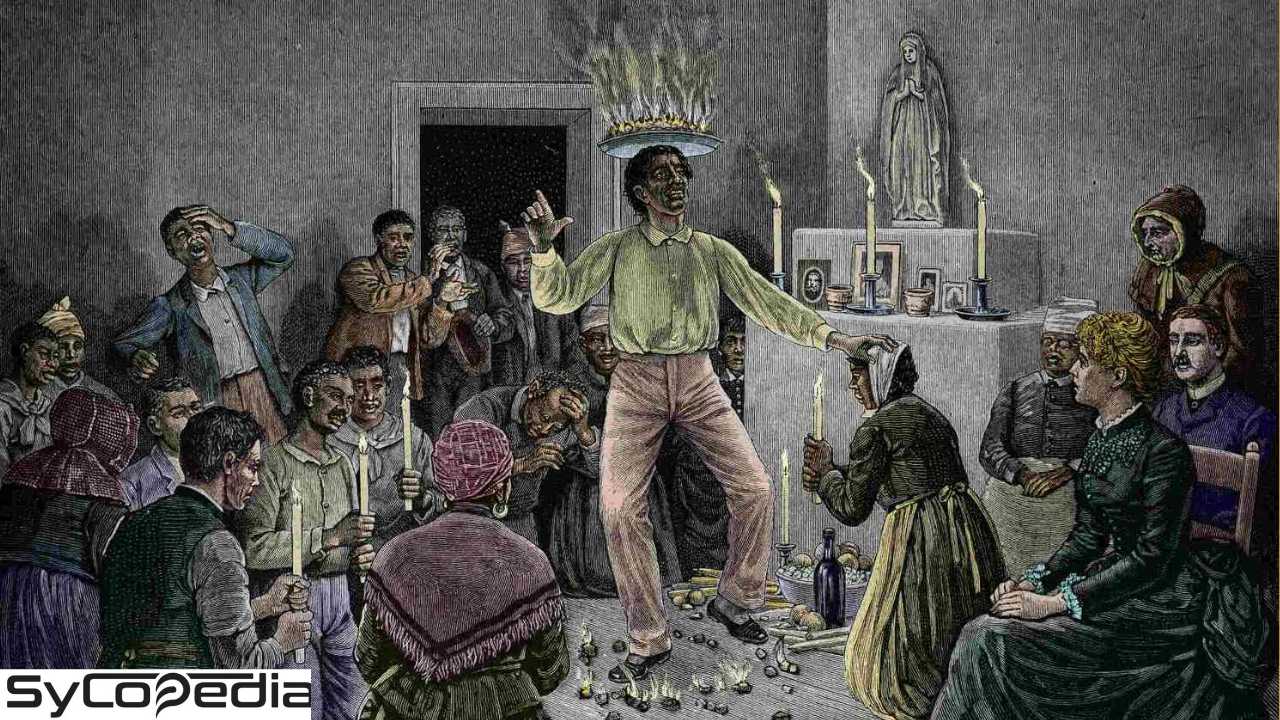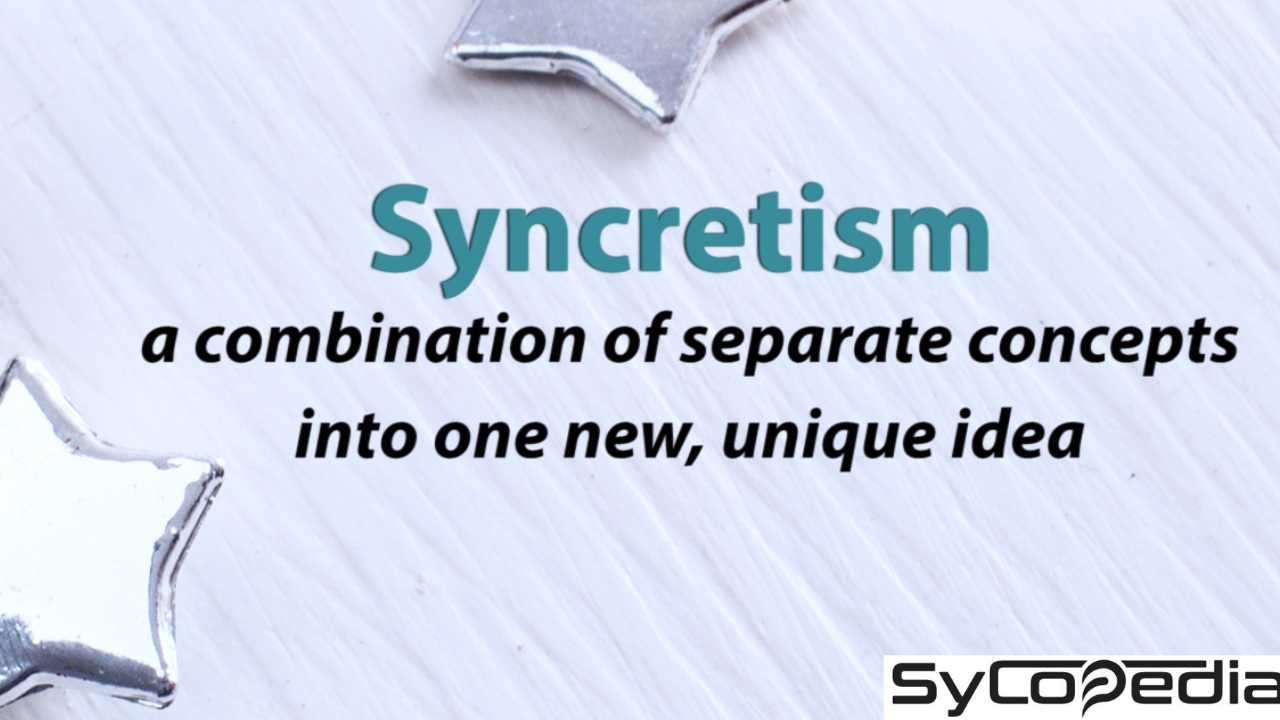With interdependence in the modern world, cultures and religions blend into one another, producing an assortment of mixed beliefs and practices. This blending process, called Syncretism, has always been misconstrued or disregarded. People must recognize how deeply it has moulded our history and impacted our daily lives.
Luckily, examples of religious and cultural Syncretism allow us to approach how societies change and convert through tradition blending. Whether religion, art, or language, syncretism examples will always outline the forces of human creativity and resilience.
If you’re curious to learn more about the fascinating world of Syncretism and explore real-world examples, keep reading! You’ll discover how this process has shaped global religions and cultures throughout history and into the present day.
What is Syncretism?
Syncretism is the process through which two or more belief systems, traditions, or practices are synthesized into a new, hybrid system. This synthesis is not limited to religion alone; it can be encountered in philosophy, art, culture, etc. In religion, this phenomenon is usually found under conquest, colonization, or migration conditions when distinct faiths or belief systems are brought into contact.
Religious Syncretism combines rituals, deities, or core beliefs derived from two or more distinct religions. For example, when missionaries from Europe arrived in America, they usually encountered previously existing systems of indigenous beliefs and practices.
Also, Read More: Latest FeedBuzzard com Trends
History and Origins
The origins of syncretism date back to the ancient world, where cultural and religious exchanges were common between civilizations. For instance, Greek and Egyptian cultures broadly interreacted each other, bringing the birth of Hellenistic Syncretism. Greek and Egyptian religious traditions interreacted heavily in the first few hundred years CE, especially in Alexandria City. Greek gods like Zeus and Egyptian deities such as Osiris and Isis often appeared together, creating new hybrid gods and religious ways.
Syncretism continued to be a strong force in the Roman Empire with the proliferation of mystery religions, such as Mithraism and the cult of Isis. Mystery religions often amalgamated various elements, combining gods, rituals, and philosophical ideas from multiple cultures. This same trend can be seen in other empires, like the Persian Empire and the Islamic Caliphates, with various religious groups that coexisted and interacted.
Syncretism Examples of Ancient Religions

Syncretic practices found fertile ground in ancient civilizations. Syncretism is most notable in the ancient period, which shows itself through the merging of Greek and Egyptian religions during the Hellenistic period. From there, the Greek Zeus became linked with the Egyptian god Amun, creating a new god named Zeus-Ammon. The oracle of Ammon in the Egyptian city of Siwa was of great fame and a major centre of worship for both Greeks and Egyptians.
In Egypt, the local god Isis was worshipped throughout the Roman Empire. The cult of Isis is a syncretic form of Egyptian religious practices combined with Greco-Roman elements. Another example of Syncretism is the god Mithras, whose worship was popular among Roman soldiers and in which Persian Zoroastrianism and Roman military culture were incorporated.
Syncretism in the Context of Christianity
Christianity, particularly in its earlier days, included multiple examples of Syncretism as it scattered throughout the Roman Empire and further. Syncretism happens when two or more additional civilizations or faiths merge into one. This often happened as Christianity entered various cultures and religions. For example, most Christian leaves, including Christmas and Easter, are traced to pre-Christian pagan festivals.
This was especially true in the conversion of various European tribes, where local pagan beliefs were blended with Christianity. In Celtic areas, for instance, the glorification of provincial gods combined with Christian education. The formation of Saint Brigid is thought to have derived from the Celtic deity Brigid. Also, the Christian use of characters such as the Christmas tree and Easter egg can be dated back to pre-Christian traditions.
Examples of Religious Syncretism in Latin America
Latin America is a prime example of religious Syncretism, particularly where indigenous beliefs and Christianity were fused during the colonial era. The arrival of the Spanish and Portuguese colonizers carried Catholicism to the Americas, but indigenous individuals adjusted Christian education by combining them with their pre-existing views.
One of the numerous famous models is the Vodou belief in Haiti. Vodou appeared as a syncretic belief mixing aspects of African, Catholic, and indigenous Caribbean views. Haitian Vodou practitioners honour martyrs, but these martyrs are often placed with African gods or ghosts, making a unique fusion of spiritual practices.
Syncretism in the African Diaspora
Diaspora, especially in the African context, has lived one of the principal ways for Syncretism, mainly as enslaved Africans carried spiritual practices to the Americas, which stood mixed with Catholicism and occasionally indigenous ideas, making different syncretic beliefs.
Candomblé emerged as a syncretic religion in Brazil and blended African Yoruba beliefs with elements of Catholicism. The worshipers of orishas are considered part of Catholic saints in their religion. Umbanda is another Brazilian religion, drawing from African traditions and Spiritism, Catholicism, and indigenous beliefs of Brazil.
Modern Syncretism Examples in Religion
Syncretism continues to shape religious practices in the modern world. The New Age activity is one instance, including images from Eastern beliefs, Western esotericism, and different indigenous traditions. Elements of Buddhism, Hinduism, and Aboriginal American spirituality are connected with Western concepts of self-improvement, recovery, and consciousness.
Shinto-Buddhism syncretism remains a powerful artistic influence in Japan. Historically, many Japanese individuals have rehearsed both the Indigenous Shinto faith and Buddhism raised in China and Korea. These two practices coexisted for centuries, with multiple experiences in Shinto practices for some parts of life and Buddhist practices for others.
Syncretism in African Orthodox Religions
African formal religions have long included pieces from other civilizations and spiritual systems, particularly during colonialism and the slave work. The Yoruba faith in West Africa, with its pantheon of gods named orishas, has affected spiritual traditions in the Americas, particularly in Cuba and Brazil. These ideas often combine with Catholicism or indigenous methods to form syncretic religions.
African traditional religions such as Ifá, Candomblé, and Santería focus on the worship of spirits and ancestors, and they are usually combined with a mix of rituals from other cultural traditions. These religions also focus on community, nature connection, and reverence of ancestors, which connect the spiritual and material worlds.
The Role in Global Religions
Syncretism plays a vital role in the continuous development of global religions. Whether it is the integration of local customs into missionary Christianity or the fusion of Eastern and Western religious ideas, Syncretism shows the adaptability of human spirituality. Global religions such as Christianity, Islam, and Buddhism have often adapted to local customs as they spread, leading to diverse interpretations and practices.
For example, in Southeast Asia, Syncretism of animism with Buddhism and Hinduism has resulted in some rather unique religious practices compared to the original regions of India. Similarly, Islamic practice in Southeast Asia is frequently syncretized with local customs, resulting in a syncretic form of Islam reflecting regional cultural diversity.
Cultural Beyond Religion
While religious Syncretism is perhaps the best known, Syncretism extends into other realms of culture. Interacting with differing traditions transforms art, language, food, and social practices. Creole languages were formed by the contact between African, European, and indigenous languages and generally arose in response to a need to communicate among enslaved people and their European owners. These are examples of cultural Syncretism developed out of necessity and through social interaction.
Similarly, Syncretism has significantly influenced music and dance forms in the Americas. For instance, jazz is a genre of music that emerged from African rhythms, European harmony, and blues, giving it a new and uniquely American flavour. In this manner, Syncretism has played a significant role in shaping cultural identity and creativity worldwide.
Syncretism and Identity Formation
One of Syncretism’s most profound impacts is its influence on identity formation. As cultures collide and interact, people often reshape their own cultural identity to accommodate parts from others. This trend is very prominent in religious Syncretism, as individuals may find new ways to exhibit their faith in mixed forms of their traditional religion and newly encountered beliefs.
Therefore, a new cultural identity was created in New Orleans, where Catholicism blended with African and French traditions in religious practices, music, food, and festivals. For instance, the Mardi Gras festival is an example of cultural Syncretism, combining African, Catholic, and indigenous influences to celebrate local identity.
Challenges and Controversies
While Syncretism has been instrumental in developing lively, diverse cultural and religious practices, it has also received opposition. Religious or cultural authorities have often condemned Syncretism as threatening traditional beliefs. For example, early Christian missionaries usually rejected the blending of Christianity with indigenous traditions, seeing it as a form of heresy.
In a similar way in Islam and Judaism, strictly pure religious thought has generally disallowed other religious phenomena from being taken into another religion. Syncretism has sometimes been seen to dilute or corrupt actual religious truth and has fueled tension and conflict.
Also, Read More: Meet Team TheWeeklySpoonCom
Syncretism and Modern Globalization

Syncretism has taken new measurements in the era of globalization as people from different creative and spiritual backgrounds come into more regular communication. Recent technology, migration, and communication have enabled the space of spiritual and artistic views worldwide, thus showing the blending of practices on an international scale.
For example, in international metropolises such as New York and London, individuals from various religious experiences come together, introducing new forms of spirituality that incorporate aspects of other religions. Yoga and mindfulness developed in Hinduism and Buddhism and have evolved widely rehearsed in Western cultures, often divorced from their original spiritual contexts.
Trends and Possibilities
For such connected futures, Syncretism continues evolving as societies intermarry and become more cross-cultural. The rise of global communication and travel means new domains for blending cultural and belief systems. These areas include even more religion, art, technology, and social practices in the future.
One potential trend could be the increased blending of secular and spiritual practices. Where old religious institutions are dwindling in some parts of the world, people increasingly turn to hybrid spiritual practices that blend mysticism, psychology, and personal development elements. This can lead to new belief systems that may be more individualistic but still reflect the syncretic blending of diverse ideas.
Conclusion
Religiosity and culture syncretism provide evidence of human capability for adaptation and creativity. Be it African Syncretism with Catholic rituals in the Americas or Eastern/Western religious traditions mixing into New Age syncretism, Syncretism has been and still forms human history. Indeed, in a rapidly globalizing world, Syncretism becomes a way out to cross-cultural dialogue and integration.
Syncretism embraces the diversity of human traditions while recognizing shared elements that unite us across time and space. In this regard, it is essential to understand the complexities and challenges of Syncretism and acknowledge its power in creating new, dynamic cultural and religious forms that reflect the ever-changing nature of human society.
Read More About Discover LetsBuildUp. org
(FAQs)
What are some examples of religious Syncretism?
Famous Examples are Santería, a Cuban religious syncretism that combines aspects of African Yoruba religion with Catholicism, and Vodou, which originated in Haiti and merges African spiritual practices with Indigenous Caribbean beliefs and Catholicism.
Is Syncretism always a positive process?
Although Syncretism can foster cultural exchange and create new and vibrant traditions, it may also lead to conflicts where some groups feel their traditions are being diluted or misrepresented.
How does Syncretism impact cultural identity?
Generally, Syncretism is pivotal in creating new cultural identities, primarily where different cultures are interfacing. It allows a person to integrate elements from other traditions into their practices.
Can Syncretism occur outside religious contexts?
Yes, Syncretism can occur in art, music, language, and political systems. For instance, the emergence of Creole languages is cultural Syncretism.
Is Syncretism a new phenomenon?
Syncretism has existed for centuries, particularly during conquest, trade, and colonization. It is a process that has moulded civilizations over the years and continues to do so in shaping cultural and religious practices today.


